In 1902, Richard Steiff was working as a toy designer for his aunt, Margarete Steiff, when he had a wacky notion. In his travels around Europe he’d sketched a drawing of a bear, and he suggested to his aunt that they should make a stuffed bear toy based on his drawing. His idea was to make a plush toy that would be 55 cm (21.6 inches) high, one of the largest toys they’d ever made. The code name was “55PB” – 55 for the height in centimeters, “P” for Plüsch (“plush”) and “B” for beweglich, (“moveable” arms and legs).
Margarete loved her nephew, but she was initially skeptical. 55PB it would be costly to make, and they’d therefore have to charge a high price for the toy. Who would buy such a thing?
But Richard really thought this was a workable idea, and so the company set to making 300 of them for him to take to the annual toy fair in Leipzig, Germany, the place where new toys were introduced to the marketplace.
Now during the fair, Richard was disappointed – his aunt had been right, no one was interested in these big toy bears. However, at the very last minute, just as the fair was winding down, an American stopped by the Steiff stall and bought all 300 of the toy bears to take back to the U.S. to sell there.
Meanwhile, back in the U.S. in 1902, unbeknownst to the Steiff firm while they were working on 55PB, there was a famous story circulating about Theodore “Teddy” Roosevelt, who was at the time President of the United States. Roosevelt was an avid hunter, and often went on hunting expeditions to kill wild animals, including bears. According to the popular press, Roosevelt’s friends had captured a bear, which they tied to a tree. They then invited Roosevelt to kill the bear, but Roosevelt declined, saying he could not kill a bear like that, as it would be unsporting to kill a bear tied to a tree. Here’s a famous newspaper cartoon from that time that depicts the incident:
Shortly thereafter, a toy bear appeared in a shop window in New York City with a sign that read “this is ‘Teddy’s Bear'”, a clever marketing ploy to capitalize on the popularity of that story about Teddy Roosevelt and the bear.
Subsequently, the toy stuffed bears are permanently christened “teddy bears”, and a toy sensation is borne.
Now, those two little anecdotes are both true, or at least they are both oft repeated in sources on the Internet. The place where the German version of the birth of the teddy bear and the American version differ is a dispute over what bear was the first one to appear in that toy store window. Morris Michtom, who later founded the Ideal toy company, claimed that he — on his own — decided to make a toy bear from scratch after hearing the story about Roosevelt’s hunting trip. Michtom said that he put his own toy bear in the window, after getting permission from Roosevelt to use the “Teddy’s bear” nomenclature on the sign.
However, the Steiff company history as presented at the Baden-Württemberg history museum in Stuttgart, and which I also found repeated on the web on German-language websites, is that it was a Steiff bear —one of those first 55PB models — that was in that shop window in the U.S. Therefore, from a German perspective, it was a Steiff bear that was the first called “Teddy’s bear”, and not an American model.
Now, some versions of the story in German also claim that an unnamed person bought one of the Steiff stuffed bears as a gift for Roosevelt’s (adult) daughter Alice, and presented it to her as “Teddy’s bear”, and that it was that gift, and not just a sign in the store window, that lead to the popularity of the teddy bear.
So, take your pick of who to believe in terms of how the teddy bear came to be and what firm produced the first one.
I’m not sure which version of the story is supported by this bit of additional information, but FWIW: shortly after the popularity of the stuffed bear toys started to grow, Richard Steiff’s brother realized that many knockoffs of their 55PB bears were being produced and passed off as real Steiff bears, and the company was losing business to these cheap reproductions. Steiff bears were, and are, made by hand, and therefore they are more expensive than your average (teddy) bear. So, in 1904 the Steiff firm began attaching a button to the ear of the bears as a sign that it was an authentic Steiff teddy bear – and nowadays all Steiff toys carry this trademark button.
If you remember back to yesterday’s post, by 1906 the Steiff company was so profitable that it was able to build a new factory, which produced 1, 700,00 toys in 1906 alone. Of those toys, more than 970,000 were teddy bears. Regardless of whose teddy bear was first, Steiff had clearly cornered a large portion of the market.
I’ve included below some photos of Margarete Steiff, her bears, her factory, and even a modern replica of the pincushion elephant that started it all. All photos were taken off the internet – if anyone wants to know the sources, let me know.
BTW, personally, I’ve never owned a Steiff bear. But I must say that after reading about Margarete Steiff, her life, and her commitment to quality and to making only the best toys for children, I have a better appreciation of why Steiff bears cost so much and what makes them so special.
In chatting with a non-German friend today (who speaks German very well), we discovered that she had actually seen a t.v. movie about Margarete Steiff’s life last year. It was fantastic tale: a little girl who, confined to a wheelchair from a young age, overcomes all odds and creates a successful business in the 1800s. My friend assumed it must have just been a completely fictional story – she’s from Columbia, where Steiff bears are not well-known.
But against all odds, that story in the t.v. move was real … and despite the lack of a prince, princess or castle, it even came complete with a happy ending, as any good Germany fairytale should. Stories just don’t get better than that. 😉
- Margarete Steiff
- Original elephant pincushion
- Reproduction of the original 55PB Steiff Teddy Bear
- Old photo showing a child with a teddy bear
- Steiff factory in 1960
- Modern replica of original Steiff elephant
- Margarete Steiff with a 55PB bear


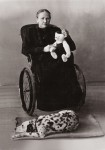
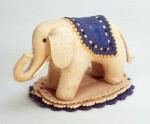
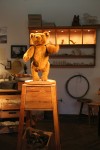
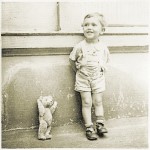
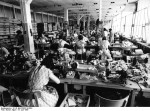
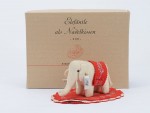
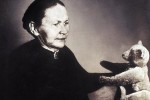
Didn’t u have a polar beer made by a notable firm? This is a nice story.
Wonder who produced the movie your friend saw. I guess I could look it up but that is work.:)
wonderful ending. great story and well written. More please, line taken from Oliver Twist.
I liked this revelation about the origin of “teddy bears.” Thanks!
Thanks for the comments – glad everybody enjoyed the history of teddy bears (and the Steiff company). 🙂